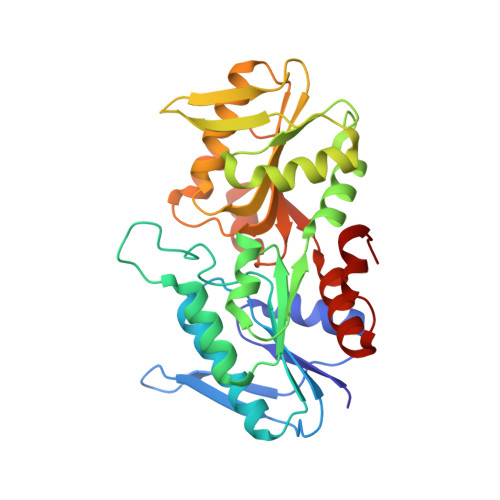Human PRPS1 filaments stabilize allosteric sites to regulate activity.
Hvorecny, K.L., Hargett, K., Quispe, J.D., Kollman, J.M.(2023) Nat Struct Mol Biol 30: 391-402
- PubMed: 36747094
- DOI: https://doi.org/10.1038/s41594-023-00921-z
- Primary Citation of Related Structures:
8DBC, 8DBD, 8DBE, 8DBF, 8DBG, 8DBH, 8DBI, 8DBJ, 8DBK, 8DBL, 8DBM, 8DBN, 8DBO - PubMed Abstract:
The universally conserved enzyme phosphoribosyl pyrophosphate synthetase (PRPS) assembles filaments in evolutionarily diverse organisms. PRPS is a key regulator of nucleotide metabolism, and mutations in the human enzyme PRPS1 lead to a spectrum of diseases. Here we determine structures of human PRPS1 filaments in active and inhibited states, with fixed assembly contacts accommodating both conformations. The conserved assembly interface stabilizes the binding site for the essential activator phosphate, increasing activity in the filament. Some disease mutations alter assembly, supporting the link between filament stability and activity. Structures of active PRPS1 filaments turning over substrate also reveal coupling of catalysis in one active site with product release in an adjacent site. PRPS1 filaments therefore provide an additional layer of allosteric control, conserved throughout evolution, with likely impact on metabolic homeostasis. Stabilization of allosteric binding sites by polymerization adds to the growing diversity of assembly-based enzyme regulatory mechanisms.
- Department of Biochemistry, University of Washington, Seattle, WA, USA.
Organizational Affiliation:




















